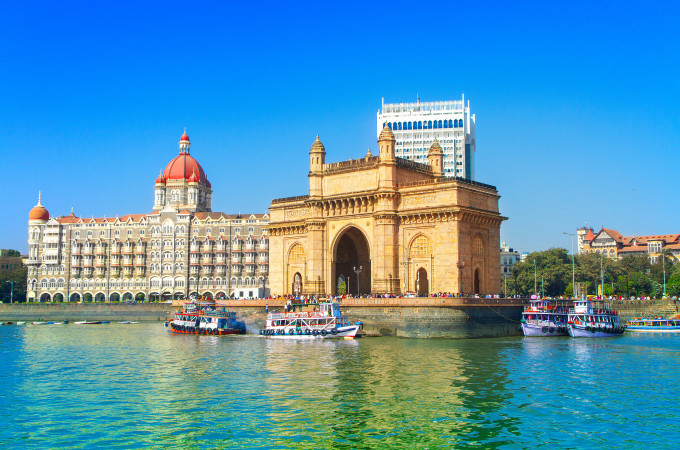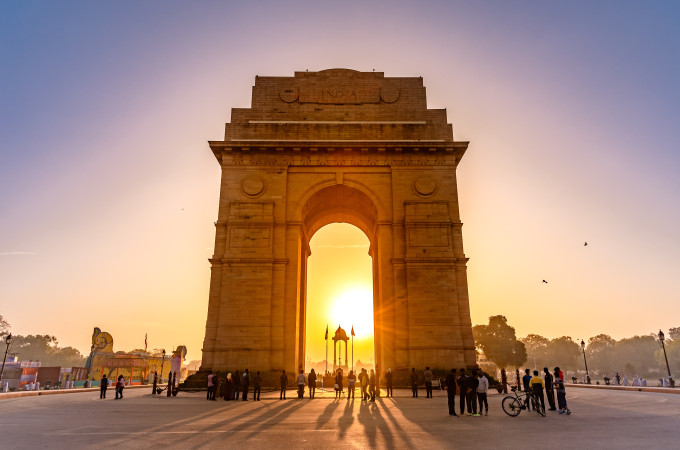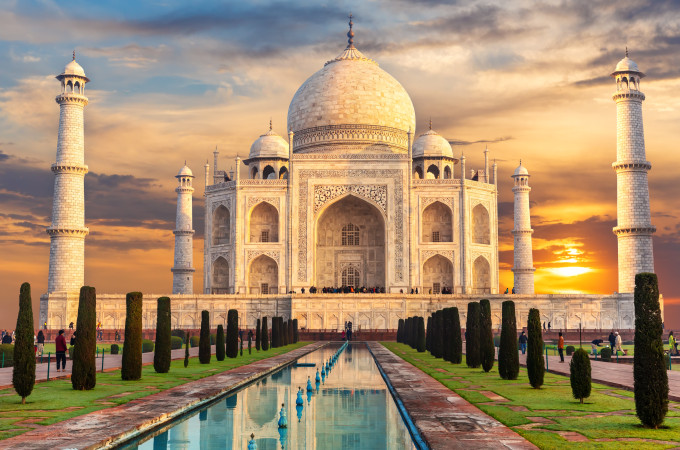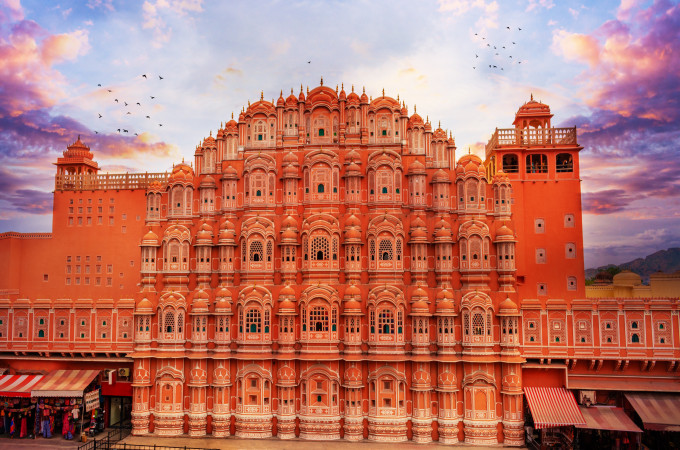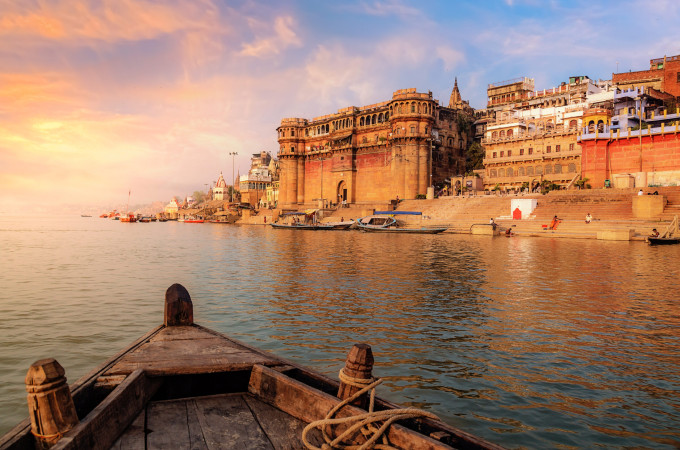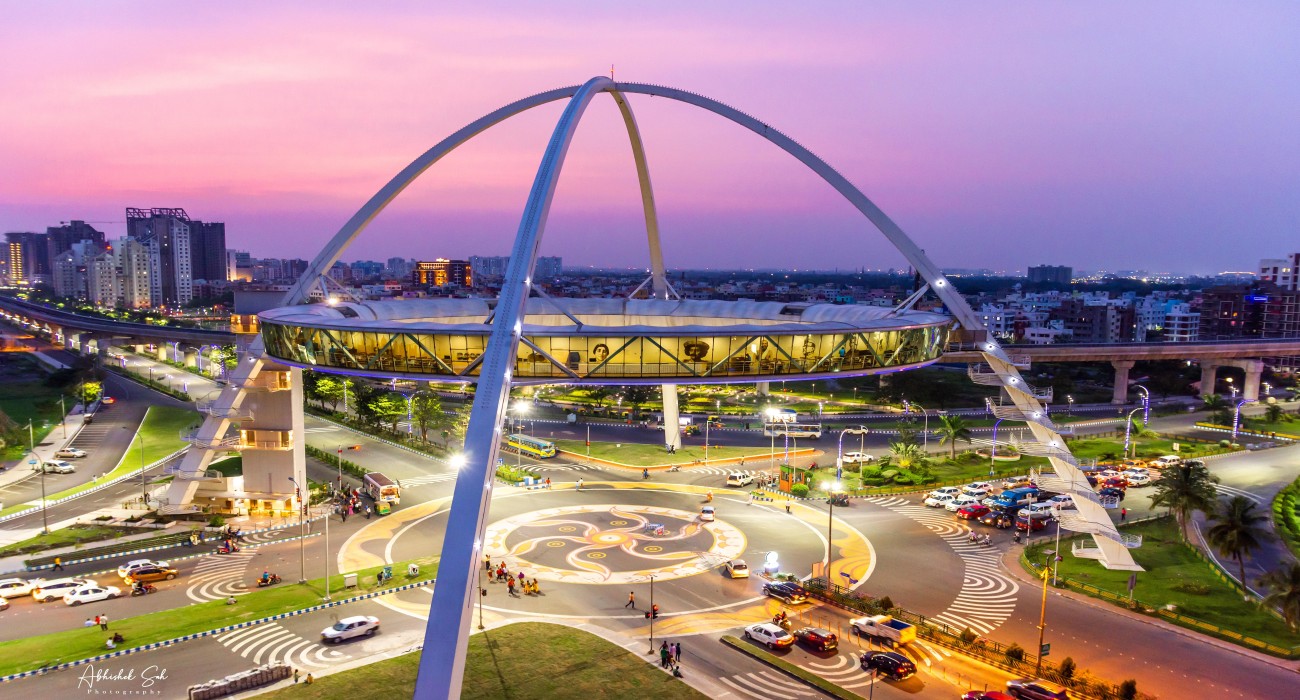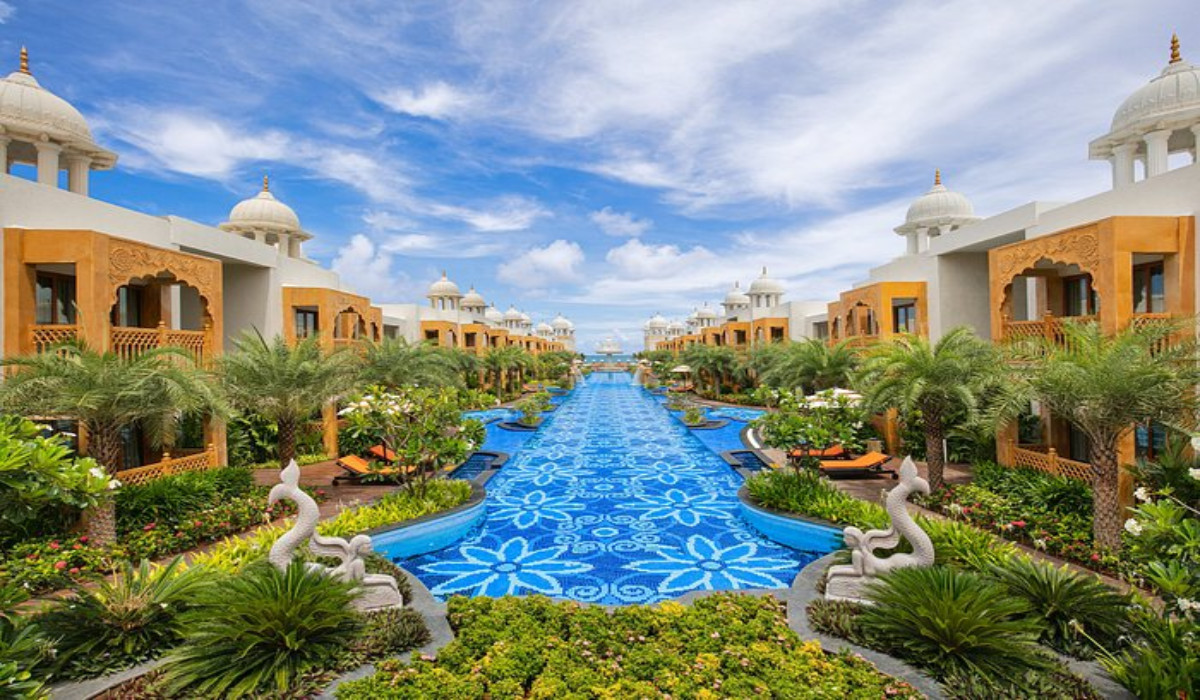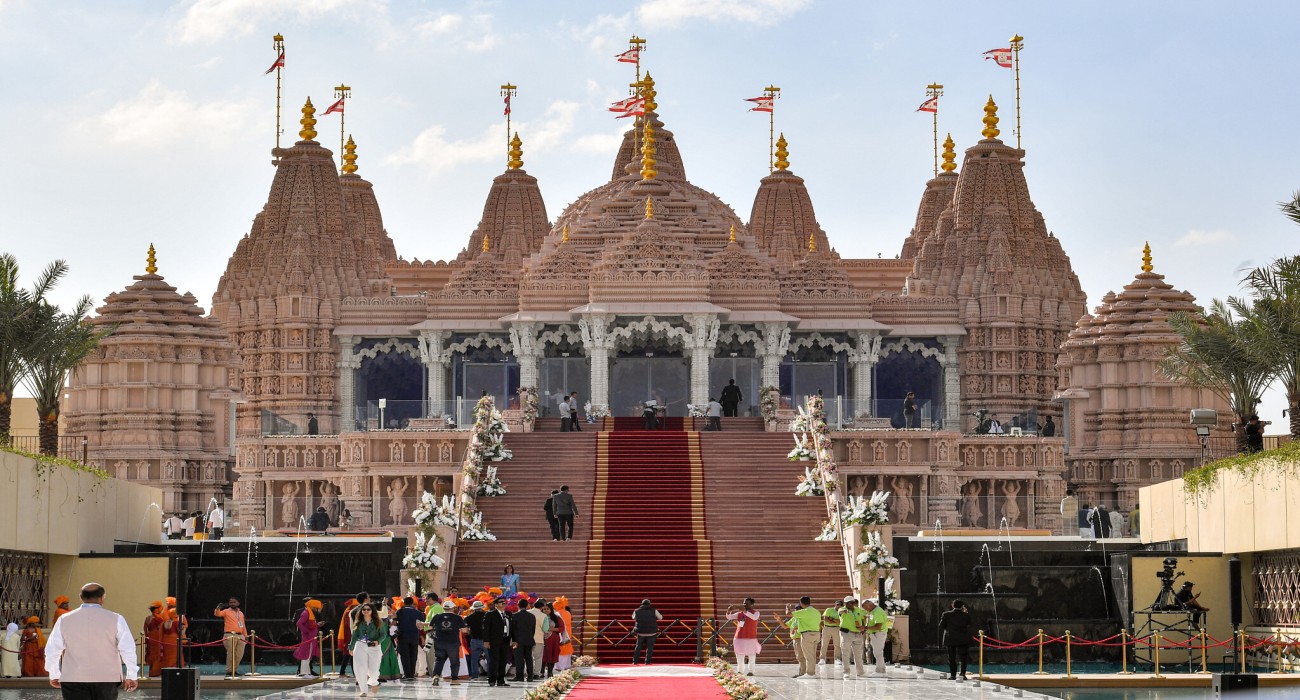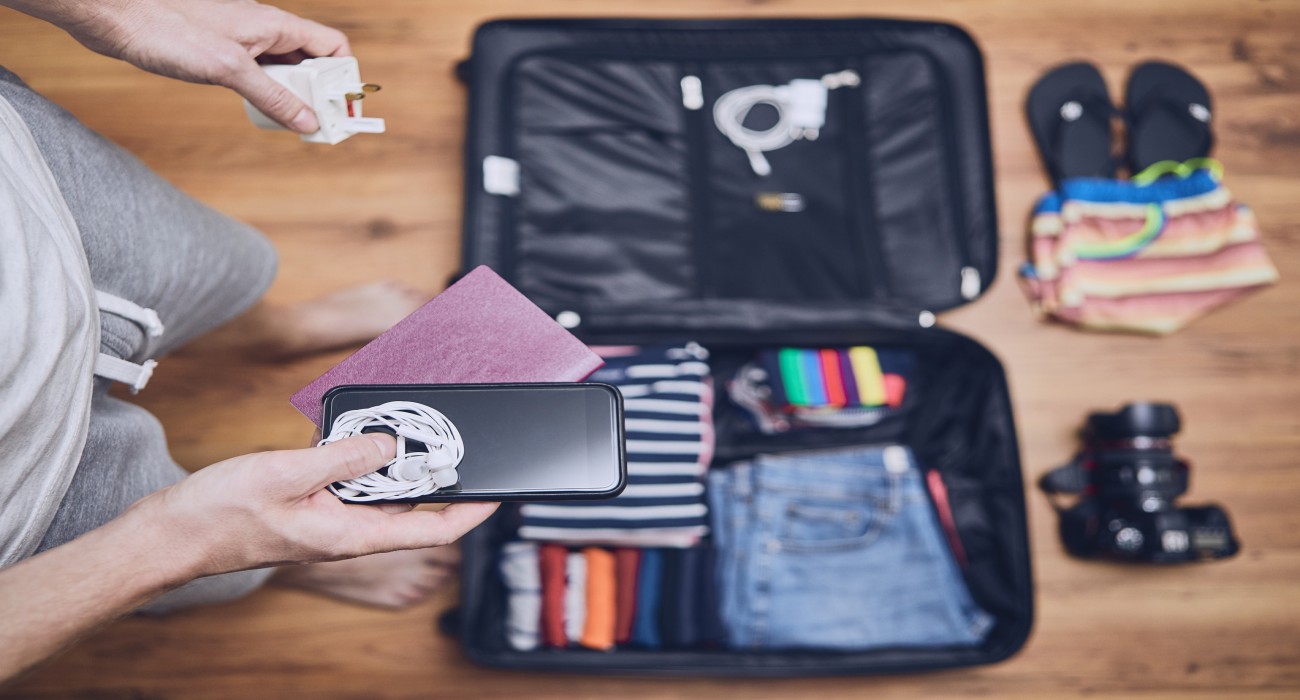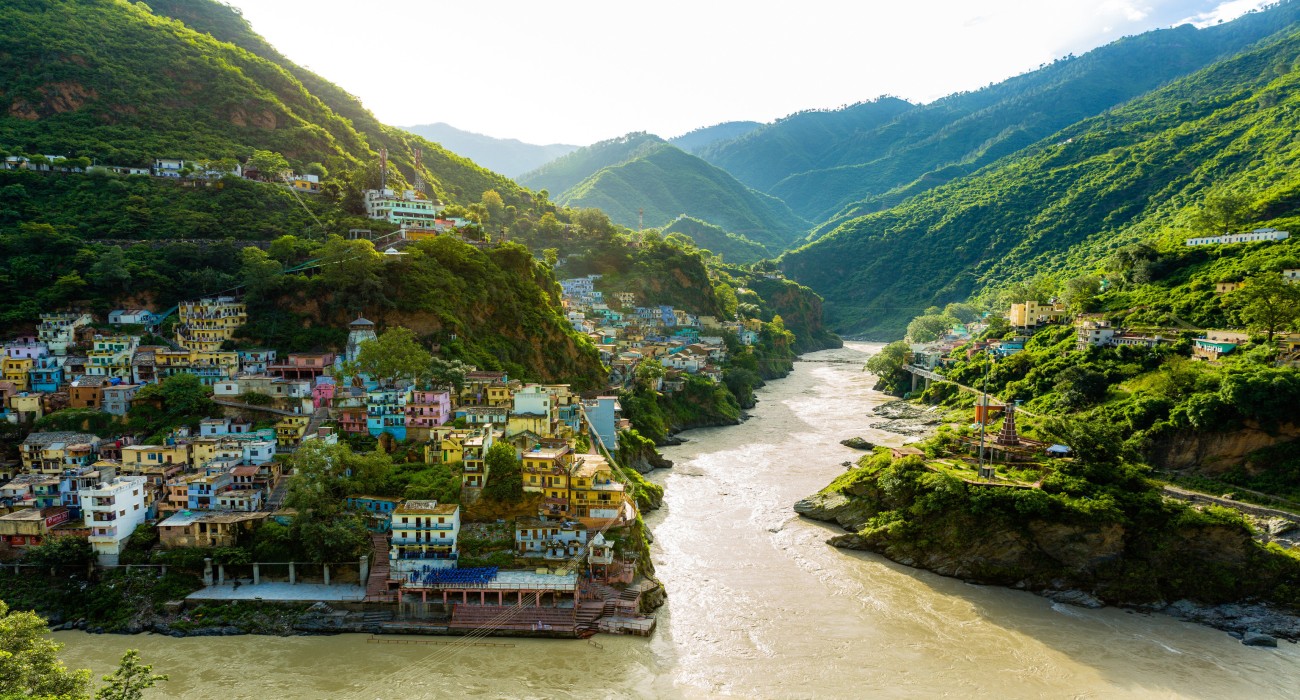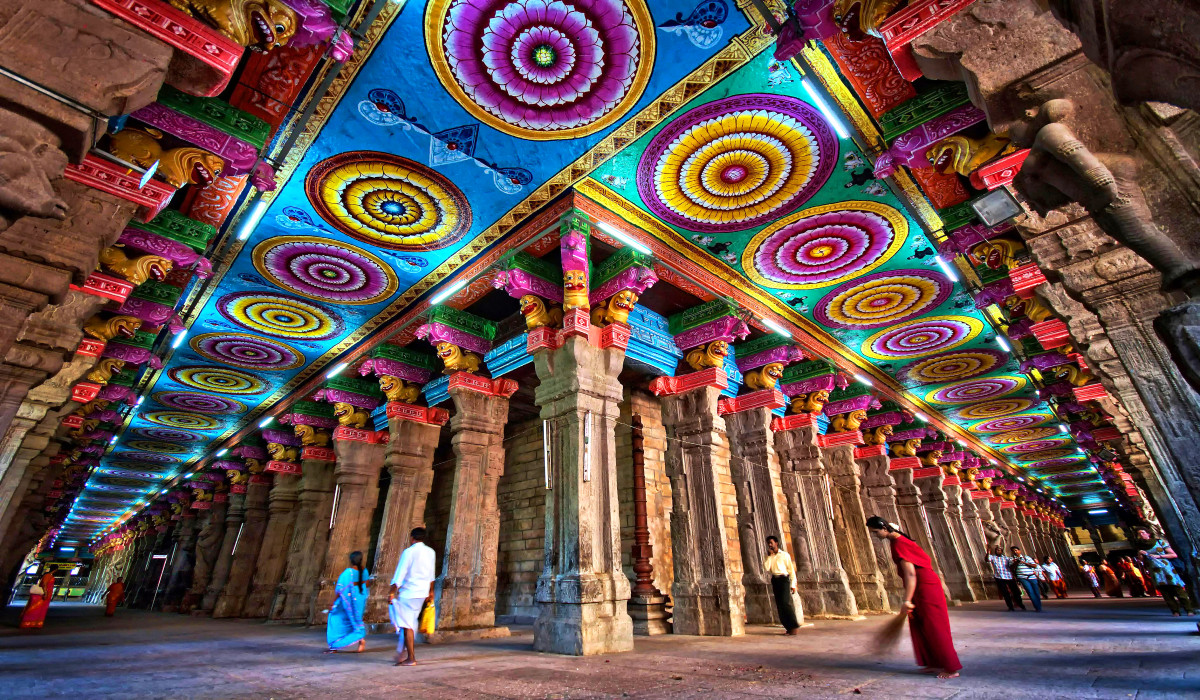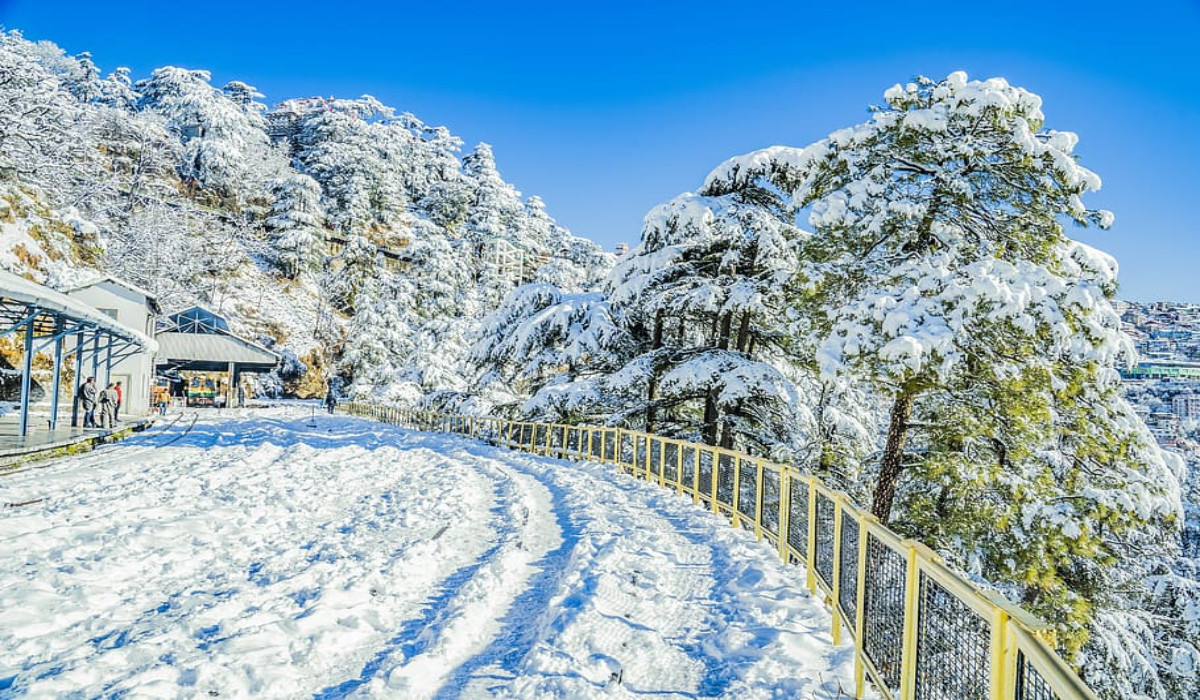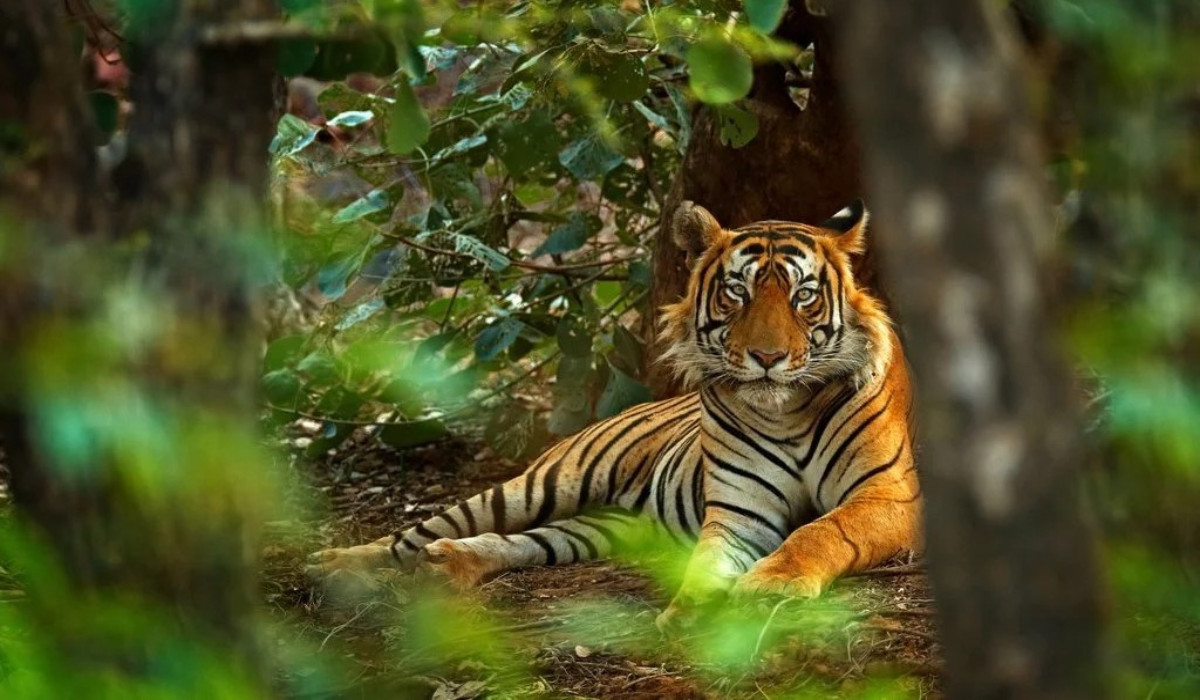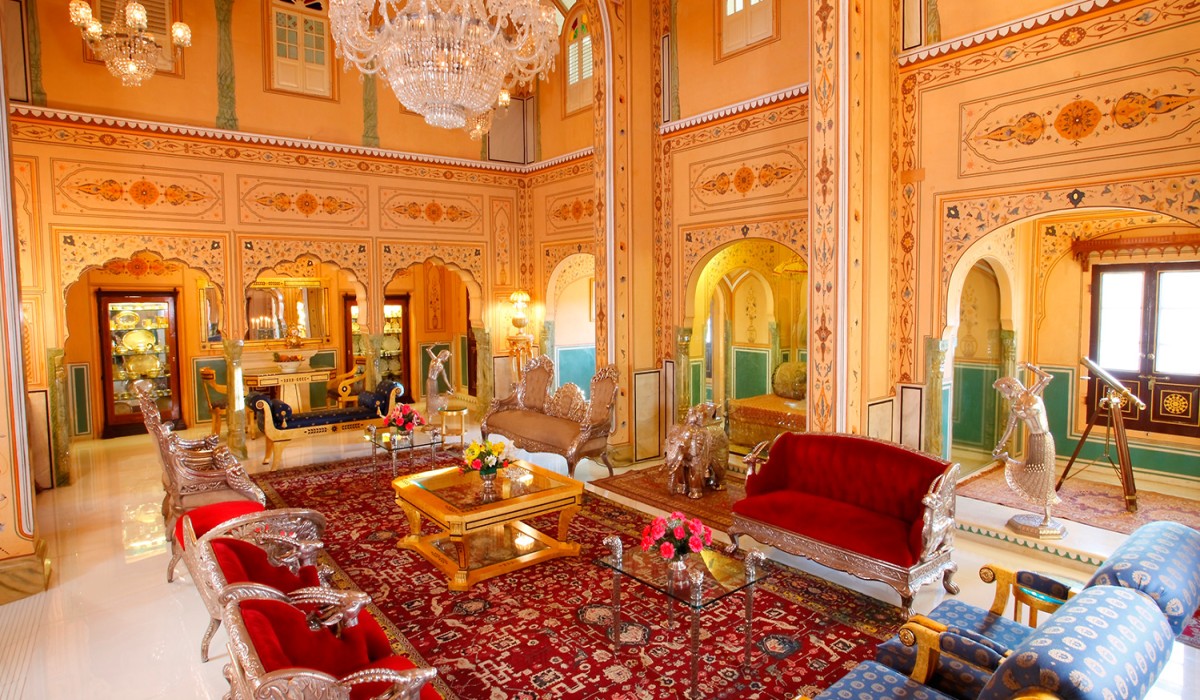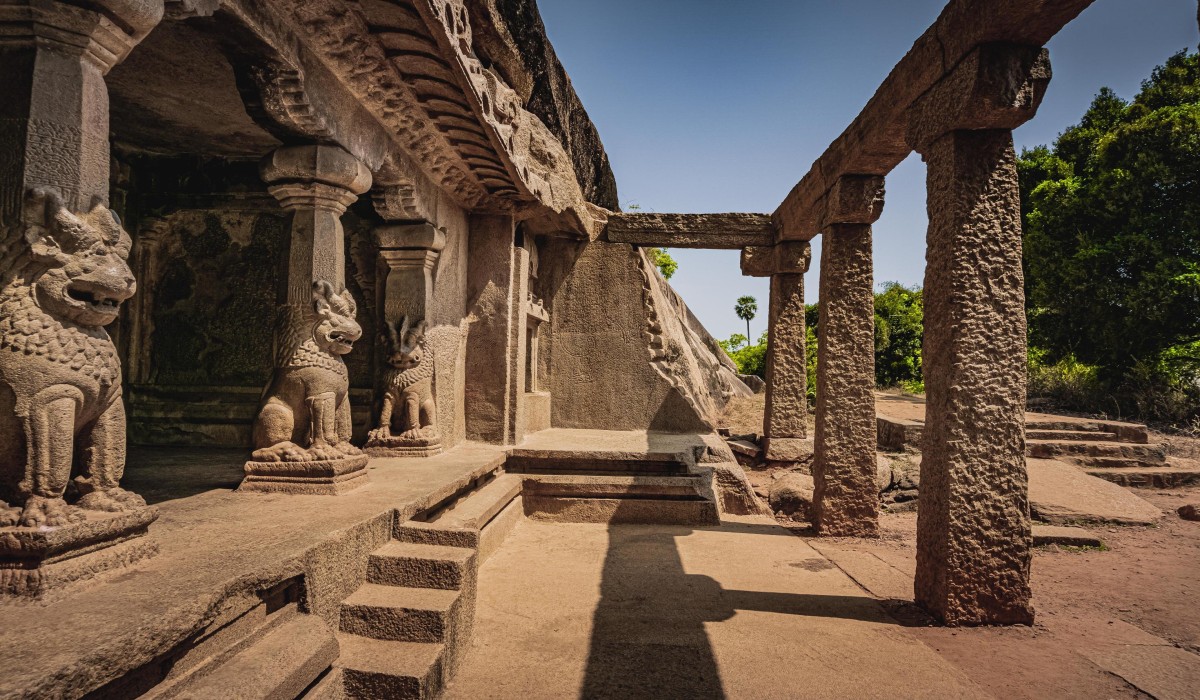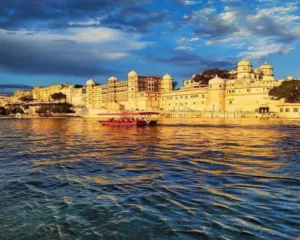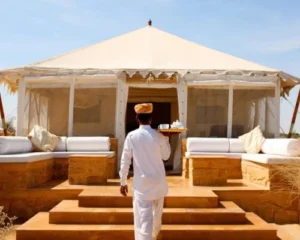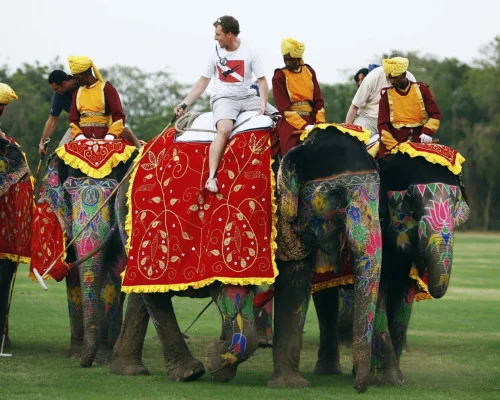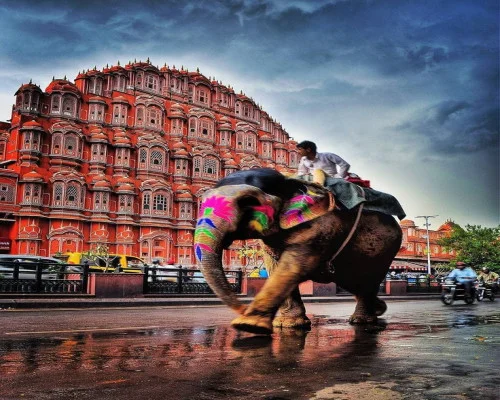For a lot of explorers, one of the most exhausting and least enjoyable aspects of travel planning is packing for the trip. And, if it’s the big leagues such as India, the whole process can swiftly become twice as complicated if you don’t have a checklist to refer to.
India is a land of diverse cultures and even more complex climates. From the snow-capped peaks of the Himalayas to the sun-kissed beaches of Goa, the country is a vibrant tapestry of experiences, landscapes, and customs.
With such vivid extremities, packing for India certainly calls for a thoughtful approach, especially if your plan involves more than one region and rolls from one month to another.
Here is a complete packing list of everything you need to ensure that your time in India is comfortable, culture-appropriate, and above all, unforgettable.
1. Essential Clothing
Indians are known to wear their customs and traditions as pride and how can it not when some of these customs have been observed for centuries all together.
The land of uncountable religious and customary practices, Indians are traditionally known to be conservative in their clothing choices, this is not to be mistaken as backward or orthodox. If anything, this modesty depicts their respect and appreciation for preserving the cultural marvel that the country is known for.
Having said that, the distinctive climate also plays a major role in defining what you pack for your travel to India.
2. Modest Attire for Cultural Respect
Dressing modestly in India demonstrates your acceptance and respect towards the country’s cultural sensitivity.
Contents
- For Women
- For Men
- Northern Regions
- Summers (March to June)
- Monsoon (July to mid-September)
- Autumn (September end to November)
- Winters (December to February)
- Southern Regions
- Monsoon (June to September)
- What should I wear to respect Indian culture while staying comfortable?
- How can I ensure safe drinking water during my travels in India?
- What are the must-have gadgets to navigate India’s infrastructure?
- How do I keep my valuables safe in crowded tourist spots?
- What type of clothing is recommended for India’s diverse climate zones?
For Women
Conventionally, Indian women wear salwar-kameez and sarees at religious places and otherwise, mainly older women.
A saree is a traditional Indian garment for women comprising a long stretch of unstitched cloth (most likely cotton or silk) which is draped around the body with one of the corners going over your shoulder.
A salwar-kameez, on the other hand, is a top and bottom combination, where the top is a loose tunic-like shirt and the bottom resembles a pair of trousers often hemmed at the ankles.
However, wearing loose-fit pants and shirts/t-shirts that cover your shoulders, long skirts, and maxi dresses is widely accepted nowadays. Avoid low-cut tops, short skirts and shorts, mini-dresses, and revealing clothing in general unless you are at a tropical destination.
For Men
It’s a bit more relaxed for men as they can almost wear everything as usual in most places. Trousers and jeans paired with shirts and t-shirts can be worn anywhere in the country, even in religious places.
Alternatively, you can also pair up a kurta (a traditional long, loose type of shirt that is often collarless) with your choice of bottoms.
Avoid walking bare-chested or wearing short shorts out of a beach destination though.
3. Climate-Appropriate Wear
The climate can vary drastically from north to south even within the same month, influencing what you wear in India during your trip. The best time to visit India is year-round so it is important that you are prepared for the varying weather conditions.
Northern Regions
Summers (March to June)
Pack loose-fit, lightweight clothing, preferably made of cotton as the North can get extremely hot. You would need to wear breathable items that can dry off sweat easily. Cotton tops and bottoms as well as kurtas for men and salwar kameez for women are ideal.
- Suggested clothing for Men – Cotton shirts and t-shirts, Denims, Loose-fitted cotton pants, 3/4th pants, Cotton kurta pajama
- Suggested clothing for Women – Cotton shirts and t-shirts, Denims, Loose-fitted pants, 3/4th pants, Cotton saree, Salwar Kameez, Knee-length and long maxi dresses, and Knee-length or long skirts
Monsoon (July to mid-September)
Although not as extreme as some of the southern regions, monsoons in the north can be pretty intense. Pack waterproof jackets and raincoats, quick-dry clothes, and water-resistant footwear such as flip-flops, crocs, and open-toe rubber/synthetic shoes are the best.
Autumn (September end to November)
Morning and evenings are cooler during these months while the days can be warm, the trick is to layer up.
Pack some lightweight outfits for afternoons and carry a shawl or light jacket or shrug if you are staying out late. Denim can be a good choice during these months.
Winters (December to February)
Winters in North India can be extremely savage, with temperatures dropping close to freezing levels in the plains of Delhi and Agra and sub-Zero levels in the foothills of the Himalayas at Dharamshala and Rishikesh.
Pack sufficient woolen items – cardigans, shawls, gloves, socks, caps and mufflers. Also, carry windcheaters or trench coats to protect yourself from the chilly winds.
Southern Regions
Monsoon (June to September)
Much like winters in the north, monsoons can be extremely powerful in the southern part of India. While prolonged rainfall for days at once can bring cooler temperatures, it can also be unbelievably humid.
Consider packing quick-dry clothing and cotton clothing. Footwear options should be the same as the northern region but you can also include gumboots.
Year-round: South India is characterized by a tropical climate for the most part. Think sunny and humid days and slightly cool but moist evenings. Airy apparel in neutral and pastel shades is most appropriate. Natural fibers such as cotton and linen are preferable.
4. Special Recommendations
Footwear: Indian roads can be bumpy at times, especially in the smaller cities/towns, comfortable walking shoes are feasible for warmer areas.
Flip-flops and sandals can be conveniently removed while entering homes and religious places. High-rise boots are a must for mountains, especially during winter.
Accessories: Carry scarves & wide brimmed hats to protect yourself from the scorching summer sun and for coverage in religious places. Hats can prevent you from getting a heatstroke.
Another useful accessory is a pair of UV-protection sunglasses. Keeping a handkerchief can help wipe off that sweaty forehead or cover up the face in polluted places. Last but not least, a water-resistant pouch can keep your valuables safe during unexpected downpours.
5. Health and Safety Necessities
Accessibility to medicine and healthcare in India has come a long way. Even the remotest towns and villages are likely to have a dispensary and a basic clinic if not a full-fledged hospital.
Still, it is highly recommended to carry any special medication that you may need regularly. Common medications such as paracetamol, low-intensity painkillers, and the like are readily sold over the counter.
However, certain medications require doctor’s prescriptions and even then, you may or may not get the exact brand and dosage. Carry sufficient supplies and the accompanying prescription and bill that shows the legitimacy of the medication you bring along.
6. Other Preventive Measures
- Water Purification: Drinking tap water in India, no matter where you go, is an absolute NO! Drink only bottled water or to be more ecologically mindful, carry a filtered water bottle. Alternative options include a portable water purifier or purification tablets. This can save you from a lot of water-borne diseases, a common concern with travelers.
- First Aid Kit: As mentioned before, pharmacies and dispensaries are widely available throughout the country, but it is a must to carry a first-aid kit equipped with band-aids, antiseptic creams, wipes, common medications for traveler’s diarrhea, motion sickness, allergies, some light painkillers, and paracetamol.
7. Digital Safety
- VPN: Whether it’s your first trip to India or your tenth, safeguarding your digital security is as important as your physical wellness. A trustworthy VPN keeps your personal and sensitive data safe over public internet connections, particularly while using Wi-Fi networks in coworking spaces, cafes, hotels, and airports.
- Travel Insurance: Strictly speaking, investing in a good travel insurance plan can save you tons of money when in unexpected, unfavorable situations. It is also a good idea to ensure that your insurance not only covers you for any and all medical expenses but also for lost baggage, delayed or canceled flights, and theft. If your trip to India involves adventure sports, be certain that the coverage includes any accidental damages caused by such activities too.
8. Practical Gear and Gadgets
In this “if it’s not on social media, it didn’t happen” age, staying digitally connected and capturing moments not just through your eyes but through the lens of your camera is an essential part of traveling. Adding a few tech items to your packing checklist of what to bring to India can significantly improve your time around India, ensuring accessibility, safety, and connectivity.
9. Connectivity and Power
- India Power Adapter: Most places in India use a plug type C, D, and M on a standard voltage of 230 V. Carry one universal adapter, preferably with multiple USB ports to charge more than one device at a time and it should cover the entire country.
- Portable Charger: Long power outages are common in certain rural parts of India. Also, traveling between cities and states can take up to 24 hours or more, meaning a portable device charger or power bank is an essential item to bring to India. The higher the mAh, the greater the number of charges you can get.
- Portable Wi-Fi: More and more travelers are moving to a digital-nomad lifestyle these days. Such remote workers require constant, reliable internet connection to work and stay connected with employers and clients. Buying a portable Wi-Fi device is a cheaper option than paying for international roaming. It is also more reliable and secure than conducting business over a public connection which may be unstable at best and vulnerable to hacking at worst.
- Local sim card: Enabling international roaming or buying an international sim card can sometimes be more expensive than getting a local sim card in India. A local sim can also help you connect with hotels, tour operators, or emergency contacts during your travel.
10. Security and Convenience
- Neck Wallet/Waist Pouch: When traveling between locations, especially on local travel modes such as trains and buses in India, it is best to carry your passport, cash, and credit cards in a neck wallet which is not only safe but also discreet. These pouches are worn under your clothes to keep them away from the site of troublemakers. They can also be very safe when you visit busy places such as tourist spots and markets in India.
- Durable Luggage Locks: No travel packing guide is complete without at least a couple of TSA-approved luggage locks. They ensure your peace of mind during transit as well as when leaving your luggage unattended at hotels and hostels.
11. Other Important Items to Consider
The above sections include most of the important items that must be included when you pack for India, however, many other items have consistently been advised as imperative by seasoned travelers and popular travel guides, these items don’t just make your travel to India favorable but they are also considered very practical for guaranteeing comfort and readiness for unforeseen situations. Here are some of those:
- Sun protection: Sunscreen, a wide-brimmed hat, full-sleeve clothes, long pants, sunglasses, and an umbrella can go a long way in protecting you from heatstroke if summer is your preferred time to visit India.
- Antimalarial medication: Mosquito-borne diseases such as malaria can be highly prevalent in certain areas of India, particularly eastern and central parts and states with large hilly and forested regions. Take some along when you go to India to be safe.
- Mosquito repellent: While malaria is specific to certain parts of the country, mosquito bites can be a nuisance almost anywhere, mostly during the rainy season. Buy a repellent made of natural ingredients such as citronella and tea tree instead of chemical ones.
- Hand sanitizers: Sanitizers have been an essential part of packing lists long before any outbreak. They are extremely helpful when traversing through public areas such as train stations, airports, bus stops, and public toilets.
- Wet wipes: Wet wipes are another essential item to not only keep your hands clean and hygienic but also help to keep yourself cool during sunny days.
- Toilet paper: These are available at drug stores, supermarkets, and even convenience stores all around the country so you don’t have to bring it along with you, but keep a couple of rolls either way and buy as you go once you are in India.
- Toiletries: Toiletries such as shampoos, soaps, lotions, toothpaste, and deodorants are available in India everywhere, but if you use any specific products and have specific skin sensitivity issues, include them in your India packing list.
- Packing cubes: Using packing cubes to separate your clothing, toiletries, footwear, etc. is a great way to save space and pack efficiently. You can also look up a travel blog or vlog on packing tips that can help with how to fold your clothes to fit everything as conveniently as possible, but remember to pack light, essentially if you are going to travel long distances.
- Travel guides and maps: While online maps are a great way to navigate anywhere in the world, they aren’t always accurate. Also, if your travel plan includes rural areas and trekking or hiking through mountains and jungles, you may not have internet connectivity to access those maps. As outdated as they may seem, get a paper map or guide on such unreliable terrains.
- Travel towel: These are not your usual towels. Travel towels are lightweight, easy to carry, and dry quickly.
- Copy of important documents: Backpacking in India or anywhere can sometimes also include renting scooters and driving around the country. And, most of these places require you to submit an ID proof. If you are submitting an original identification proof, it is best to keep a copy. Also, a photocopy will come in really handy if you accidentally lose the originals.
- Language phrasebook: This may or may not be essential to your checklist for India but carrying a phrasebook with some common, helpful phrases that help you find the nearest bathroom, or a hospital, ask for help, or express gratitude can prove unbelievably helpful.
Frequently Asked Questions
What should I wear to respect Indian culture while staying comfortable?
Traditionally, Indians are known to dress conservatively. Whether you try Indian wear such as kurta-pajama (for men) and saree (for women) or prefer to adorn Western outfits, as long as they are not too revealing and occasion-appropriate, it should be okay. That being said, wearing cotton during summers and woolen for winters would keep you comfortable, depending on which part of India you visit.
How can I ensure safe drinking water during my travels in India?
It is best to either buy bottled water or carry a bottle with an in-built water filter to avoid any water-borne health conditions. Drinking water from the tap is highly inadvisable anywhere in India.
India is humongous and the harsh truth is that it is not as advanced in terms of public conveniences as some of the other countries in the world. A gadget packing list for India must include your phone with a universal adapter and a power bank. Also, always have offline maps saved on your phone. If you go out at night, carry a headlamp or torch as not all streets are well-lit.
How do I keep my valuables safe in crowded tourist spots?
Short answer – don’t carry your valuables to crowded spots. Long answer – carry as little as possible and use a carry pouch or money belt. Choose a front-facing backpack and stay cautious. If you are staying at a decent hotel with a locker in your room, leave your valuables in the locker whenever possible. Avoid wearing bling jewelry or flashing expensive gadgets.
What type of clothing is recommended for India’s diverse climate zones?
India has diverse climates so any long-term travel within the country requires that you prepare for all seasons. However, to give you a brief idea, if you are traveling through the country between March and June, carry lightweight, breathable cottonwear as it can get extremely hot. Additionally, if you visit North India between late November and mid-February, pack sweaters, jackets, woolen scarves, hats, and even gloves to prevent the harsh weather. Furthermore, it is also advisable to carry a raincoat for the rainy season which is usually July to September.
 Skip to main content
Skip to footer
Skip to main content
Skip to footer
